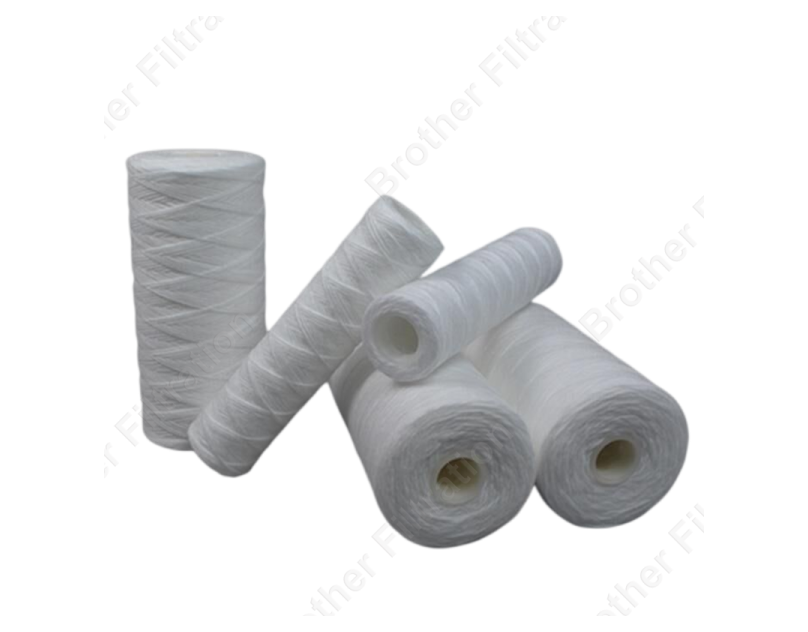In the intricate world of filtration, the string wound filter emerges as a versatile and efficient solution for a myriad of applications. Understanding the science behind these filters and exploring their diverse uses is essential for industries and individuals seeking optimal filtration performance.
The Anatomy of String Wound Filters
String wound filters consist of a cylindrical core around which a fibrous string is tightly wound. The materials used for the string may include polypropylene, cotton, or other synthetic fibres. The winding pattern and density contribute to the filter's effectiveness in capturing particles of varying sizes.
Filtration Mechanism
The filtration process begins as the fluid passes through the outer layers of the string wound filter. Larger particles are captured on the outer surface, while smaller particles are progressively filtered as the fluid moves toward the core. This depth filtration mechanism ensures efficient removal of contaminants across a broad spectrum of sizes.
Applications in Water Treatment
String wound filters are widely employed in water treatment systems. Their ability to effectively trap sediment, sand, and particles makes them ideal for applications such as well-water filtration, municipal water treatment, and pre-filtration for reverse osmosis systems. The filters' adaptability to different water qualities and flow rates enhances their utility in diverse settings.
Industrial Processes and Chemical Filtration
In industrial processes, especially within the chemical and petrochemical sectors, string wound filters play a critical role. These filters excel in capturing impurities, ensuring the purity of liquids used in manufacturing processes. The compatibility of string wound filters with a range of chemicals makes them indispensable for maintaining product quality and equipment integrity.
Oil and Gas Industry Applications
The oil and gas industry relies on string wound filters for various filtration stages. From protecting equipment such as pumps and compressors to ensuring the quality of hydrocarbons, these filters contribute to the efficiency and reliability of critical processes. Their durability and resistance to harsh conditions make them a preferred choice in demanding environments.
Selecting the Right String Wound Filter
Choosing the appropriate string wound filter involves considering factors such as the material composition, micron rating, and compatibility with specific fluids. Understanding the unique requirements of the filtration task is essential to selecting a filter that optimally balances efficiency and longevity.
Maintenance Practices for Longevity
Proper maintenance is crucial for maximizing the lifespan and efficiency of string wound filters. Regular monitoring, timely replacement, and adherence to recommended changeout intervals contribute to sustained filtration performance. Additionally, backwashing or cleaning may be applicable in certain systems to extend the filter's service life.
Environmental Considerations and Sustainability
The use of string wound filters aligns with sustainability goals in various industries. The longevity and effectiveness of these filters contribute to reduced waste compared to disposable alternatives. Additionally, advancements in filter materials and manufacturing processes continue to enhance their environmental profile.
Conclusion
In conclusion, delving deeper into the science and applications of string wound filters unveils their significance in diverse filtration systems. From water treatment to industrial processes, these filters demonstrate versatility, reliability, and sustainability.
As technology and manufacturing techniques evolve, string wound filters will likely continue to be at the forefront of effective and efficient filtration solutions, ensuring the purity and integrity of fluids in numerous applications.
